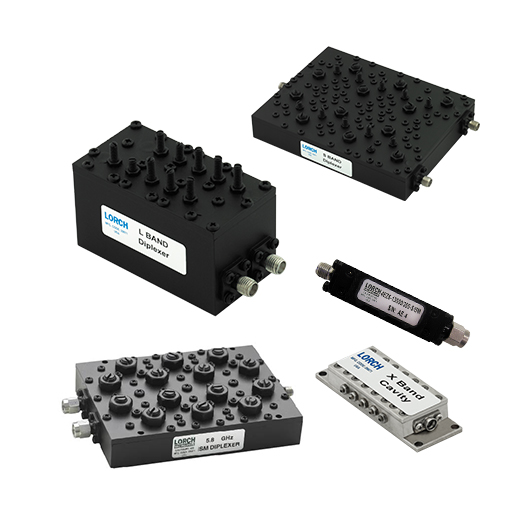
- 30 MHz to 40 GHz
- 3 dB Bandwidths from <0.5 to >66%
- High "Q", Low Loss
- Computer-Aided Designs
- Helical, Combline, Interdigital
- Waveguide
- 12 Stock Series

Smiths Interconnect|Lorch's cavity filter designs are available in the frequency range of 30 MHz to 40 GHz and with bandwidth options from less than 0.5% to over 66%. Cavity filters offer the user very low insertion loss, steep skirt selectivity, and narrower bandwidths than discrete component filters. Cavity filter performance is based on parts selection and physical layout of the helical coils, resonators, as well as the shape and size of the cavity housing. Smiths Interconnect|Lorch offers the user 12 unique stock designs to satisfy the majority of applications. At lower frequencies a helical coil is used to excite the electromagnetic field, while a 1/8 to 1/4 wave capacitively loaded design is used at higher frequencies. A cylindrical waveguide design is used to achieve narrow bandwidths and high power operation.
Each filter is custom-designed to your exact specification so that you will receive the optimum performance at the lowest cost. Filter performance is easily predicted using our proprietary software, while CAD files are generated for our CNC machine and fabrication center. At Smiths Interconnect|Lorch, even complex designs and working drawings can be generated in a matter of a few hours...not weeks.
Standard cavity filters generally are designed using aluminum as the base metal. As most raw metals are inherently lossy, filter housings are silver plated for improved electrical characteristics and current flow. Brass, copper, aluminum or bi-metal resonators are used to minimize frequency drift over temperature.
If by chance your requirements cannot be met from the units described herein, please contact our technical marketing staff for assistance. With over 30 years of filter designs in our data bank, chances are good that we have successfully solved a similar problem in the past.